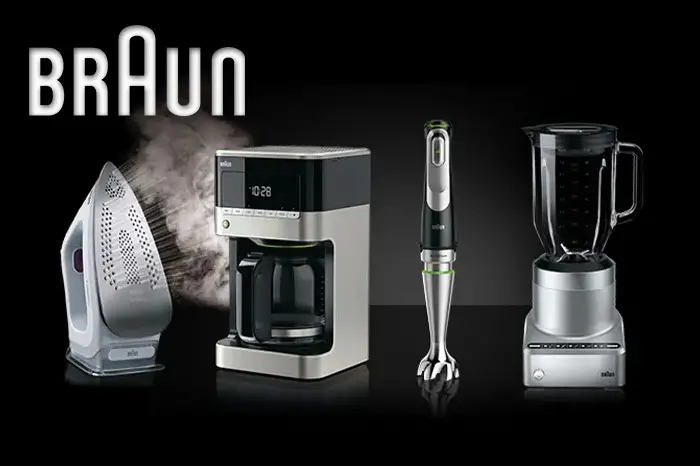
Max Braun, an engineer, established a small engineering shop in Frankfurt am Main in 1921. In 1923 he began producing components for radio sets. In 1928 the company had grown to such an extent, partly due to the use of certain plastic materials, that it moved to new premises on Idsteiner Strasse in Frankfurt.
Eight years after he started his shop, Max Braun began to manufacture entire radio sets in 1929. Soon after, Braun became one of Germany’s leading radio manufacturers. This development continued with the launch of one of the first combined radio and record players in 1932.
In 1935 the Braun brand was introduced, and the familiar logotype with the raised “A” took form. At the 1937 World’s Fair in Paris, Max Braun received the award For special achievements in phonography. Three years later, the company had more than 1000 employees.
Braun continued to produce state-of-the art radios and audio equipment, and in 1956 introduced its now famous SK-4 record player. Braun soon became well known for its ‘high-fidelity’ audio and record players.
The 1950s also marked the beginning of the product that Braun is most known for today: the electric shaver. The S 50 was the first electric shaver from Braun and featured an oscillating cutter block with a very thin, yet very stable steel-foil mounted above it. This principle is still used in Braun’s shavers of today.
From the mid-1950s, the Braun brand was closely linked with the concept of German modern industrial design and its combination of functionality and technology. The most influential designer at this time was Dieter Rams, a member of Braun’s design staff. Rams was a key figure in the German design renaissance of the late 1950s and 1960s, and a former teacher at the Ulm Hochschule für Gestaltung. Eventually becoming head of Braun’s design staff, Rams’ influence was soon evidenced in many products. Braun’s famous SK-4 record player and the high-quality ‘D’-series (D45, D46, D47) of 35mm slide projectors are some of the better examples of Functionalist design. Another ‘icon’ of modern design, but less well known, is the electrostatic loudspeaker unit LE1, the electonics were licenced from QUAD U.K. For nearly 30 years Dieter Rams served as head of design for Braun A.G. until his retirement in 1997. Many of his designs – wonderfully sleek coffee makers, calculators, radios and razors – have found a permanent home at the Museum of Modern Art.
In the 1970s, a design approach influenced by pop-art began to inspire Braun products, which by this time included many common household appliances and products. Contemporary Braun design of the period incorporated this new approach in bright colors and a lightness of touch, while still clean-lined in keeping with Functionalist philosophy.
A controlling interest in Braun AG was sold to The Gillette Company in 1967 by the heirs of Max Braun, complementing the razor offerings of that company. Braun became a wholly owned subsidiary of Gillette in 1984; Gillette was in turn acquired by Procter & Gamble in 2005.

